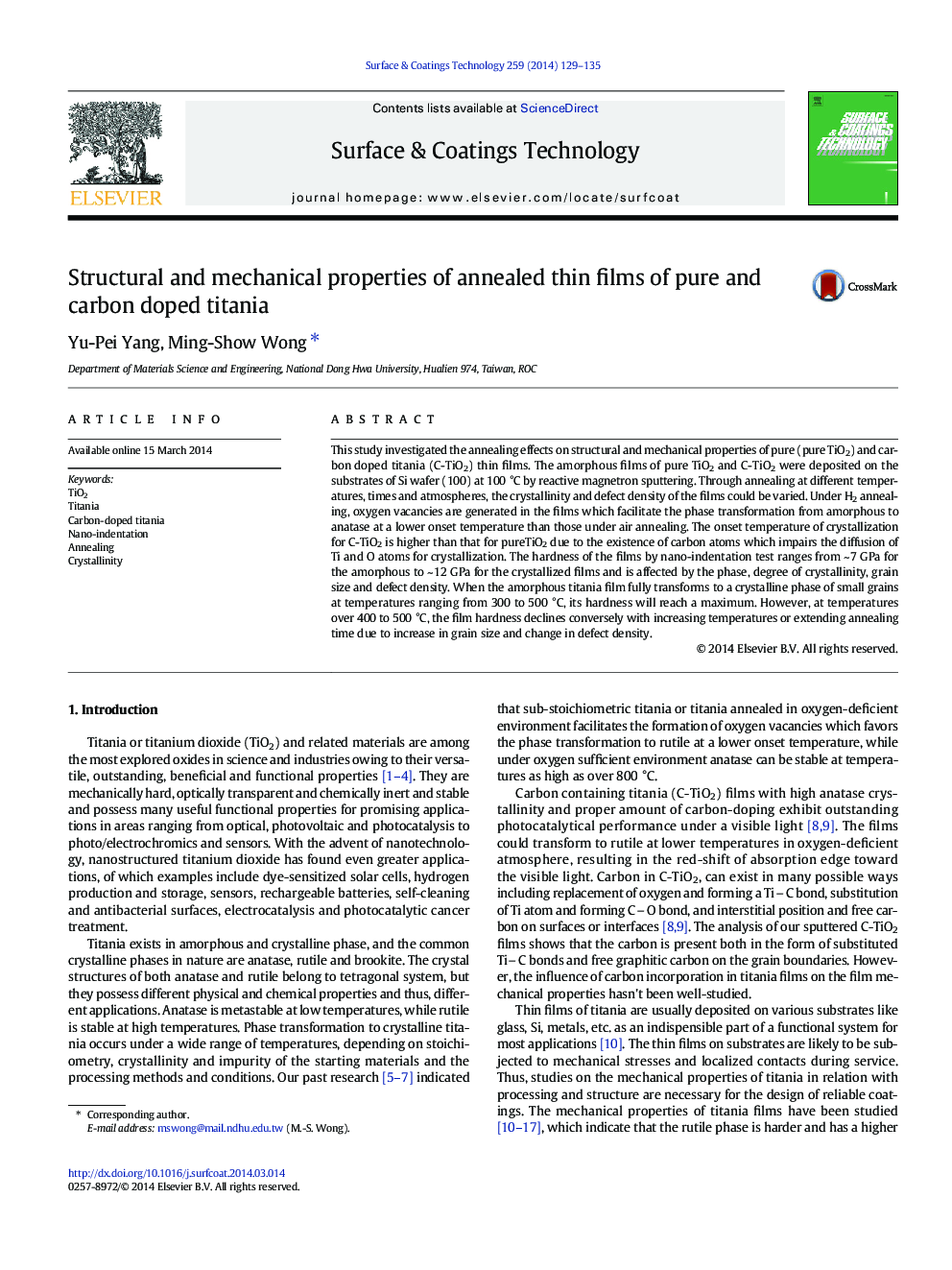| Article ID | Journal | Published Year | Pages | File Type |
|---|---|---|---|---|
| 1657343 | Surface and Coatings Technology | 2014 | 7 Pages |
•Annealing effects on structures and properties of pure and carbon doped titania.•Nano-indentation hardness ranges from ~ 7 GPa to ~ 12 GPa depending on structure.•Hardness affected by crystallinity, defect density and grain size of the films•Hardness at maximum for fully crystalline films of small grain size
This study investigated the annealing effects on structural and mechanical properties of pure (pure TiO2) and carbon doped titania (C-TiO2) thin films. The amorphous films of pure TiO2 and C-TiO2 were deposited on the substrates of Si wafer (100) at 100 °C by reactive magnetron sputtering. Through annealing at different temperatures, times and atmospheres, the crystallinity and defect density of the films could be varied. Under H2 annealing, oxygen vacancies are generated in the films which facilitate the phase transformation from amorphous to anatase at a lower onset temperature than those under air annealing. The onset temperature of crystallization for C-TiO2 is higher than that for pureTiO2 due to the existence of carbon atoms which impairs the diffusion of Ti and O atoms for crystallization. The hardness of the films by nano-indentation test ranges from ~ 7 GPa for the amorphous to ~ 12 GPa for the crystallized films and is affected by the phase, degree of crystallinity, grain size and defect density. When the amorphous titania film fully transforms to a crystalline phase of small grains at temperatures ranging from 300 to 500 °C, its hardness will reach a maximum. However, at temperatures over 400 to 500 °C, the film hardness declines conversely with increasing temperatures or extending annealing time due to increase in grain size and change in defect density.
